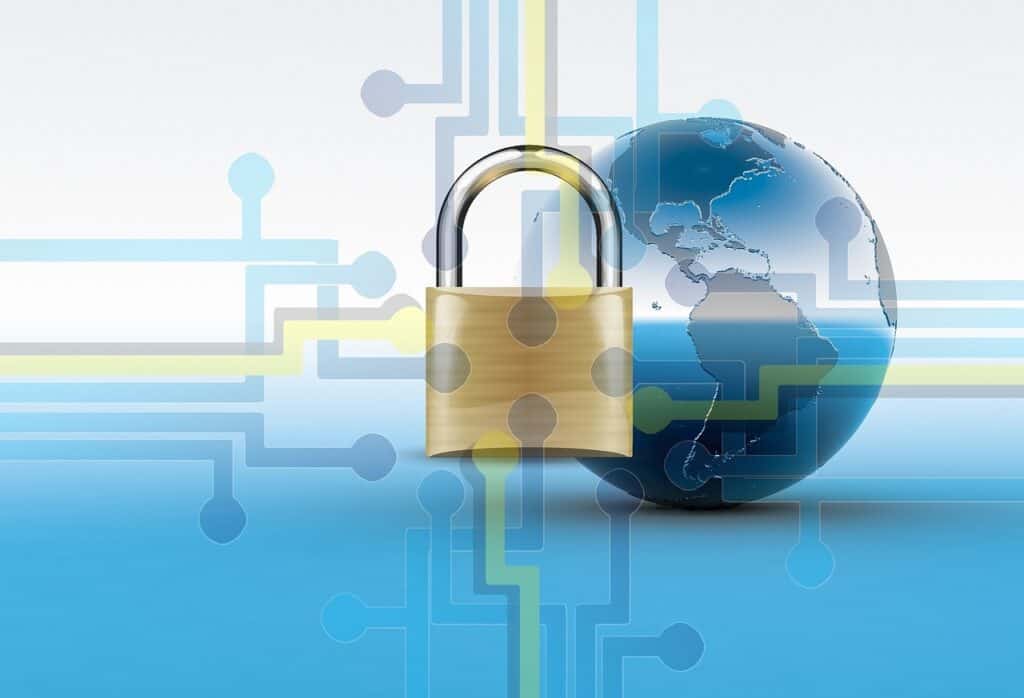With the rise of online connectivity, protecting your organization’s computer networks is more important than ever. Crafty cybercriminals are constantly developing new tactics to infiltrate systems, steal data, and wreak havoc.
One tiny network security hole is all it takes to potentially cripple a business and inflict devastating financial losses. That’s why implementing strong, multi-layered network defenses must be a top priority.
Continue reading to explore different aspects of effective network security that can help your business stay safe.
Understanding Network Security Essentials
Network security involves various tools, policies, and practices for monitoring and securing the underlying networking infrastructure that connects devices, servers, applications, and data. The core goal is to prevent unauthorized access, misuse, or network attacks that could disrupt operations or result in data breaches.
Truly effective network security requires a coordinated, defense-in-depth approach that touches every part of the infrastructure.
Let’s explore the key elements to protect your networks comprehensively:
Conducting Network Risk Assessments
The first step in enhancing network security posture is thoroughly auditing and assessing potential vulnerabilities and threats. Qualified security teams will review your current network architecture, map data flows, document weaknesses, and then provide recommendations to remediate risks.
Common network security risk factors include outdated or unpatched systems, insecure remote access policies, a lack of encryption protocols, misconfigured firewalls, insider threats, and overall poor network hygiene. Penetration testing that simulates real-world attacks can help in this regard, as it picks up on security gaps before cybercriminals find them.
Implementing Essential Network Controls
Once risks have been evaluated, organizations must implement a set of technical network controls and protocols as foundational defense layers. These typically include the following:
-
Access Control: Strict identity verification and authentication measures control who can access networks and specific areas. Role-based permissions limit privileges based on individual roles and responsibilities. Multi-factor authentication adds an extra layer of security beyond just passwords.
-
Firewalls: These border security devices monitor and control incoming and outgoing network traffic based on predefined security rules. Modern next-gen firewalls utilize advanced monitoring and threat detection features.
-
VPNs: Virtual private networks encrypt and secure all data transmission across networks, which is especially important for remote access and public Wi-Fi connections. VPNs prevent eavesdropping and man-in-the-middle attacks.
-
Antivirus or Antimalware: Up-to-date endpoint antivirus, anti-spyware, and anti-ransomware software protect devices from malware intrusions and infections. Cloud-based centralized threat intelligence provides the latest protection.
-
Encryption: Encryption technology scrambles data so it appears like unintelligible gibberish to anyone unauthorized. This safeguards sensitive information as it traverses networks.
Extensive logging and monitoring systems actively watch for any suspicious network behaviors that could indicate intrusion attempts or compromises. Security information and event management (SIEM) tools provide real-time analysis and alerting.
Thorough Physical and Administrative Controls
Technical controls alone are not enough; effective network security also requires physical security measures and comprehensive administrative policies enforced organization-wide.
On the physical front, entry controls like keycards or biometric scanners restrict server room and network equipment access only to authorized IT staff. Strict protocol around hardware changes or removable media prevents tampering or improper network connectivity.
Administrative protections formalize network security policies, covering topics like acceptable use, password standards, remote access, security responsibilities, and reporting procedures. Ongoing risk management, business continuity planning, and regular security audits further strengthen resilience.
Providing End-User Security Training
Despite layered technical defenses, research shows human error and negligence often enable the most successful network attacks. That’s why comprehensive end-user security awareness training is necessary for all employees, contractors, and third parties with network access.
Training programs should cover topics such as password best practices, email security, device protection, social engineering tactics, proper data handling, and overall security awareness. Phishing simulations reinforce scrutiny of suspicious emails or links. Building a culture of security mindfulness across the workforce drastically improves incident prevention and response.
Continuous Monitoring and Incident Response
Even the most formidable network security defenses cannot guarantee total prevention against emerging cyberthreats. For maximum protection, ongoing system monitoring, analysis of anomalous activity, and finely-tuned incident response plans are essential.
Modern security operations centers (SOCs) utilize AI or machine learning algorithms to detect stealthy network irregularities and facilitate rapid investigation of potential threats across the entire environment.
If prevention ultimately fails, a well-rehearsed incident response strategy enables quick containment, damage assessment, network or data forensics, remediation, and recovery efforts. Post-incident reporting ensures any security gaps are addressed.
Emerging Trends and Technologies in Network Security
As cyberthreats continue to evolve, new and innovative network security technologies are emerging to provide more advanced threat detection and prevention capabilities:
Zero Trust Network Access (ZTNA)
This architecture eliminates the traditional concept of a secure network perimeter. Instead, it authenticates and encrypts every network connection while continuously validating trust before granting access to applications and data based on least privilege principles.
Secure Access Service Edge (SASE)
SASE converges network and security functions into a single cloud-delivered service to enable secure access no matter where users, applications, or devices are located. Features like SD-WAN, CASB, FWaaS, and ZTS are integrated.
Confidential Computing
This utilizes specialized secure enclaves and trusted execution environments within hardware, operating systems, applications, and networks themselves to encrypt data while in use, not just at rest or in transit.
Extended Detection and Response (XDR)
XDR provides unified visibility across an organization’s entire security stack, automatically collecting and correlating data across multiple security layers to detect and respond to complex threats rapidly.
Artificial Intelligence or Machine Learning
Next-gen security products leverage AI or ML to establish behavioral baselines, detect anomalies, learn from new threats, and automate response actions without human intervention required.
As networks become more distributed across multiple environments, emerging trends and cutting-edge technologies will be parts of a comprehensive security architecture that will keep your business safe.
The Importance of Network Security for All
With more businesses embracing digital transformation, strong network security protocols are no longer optional. Every organization that utilizes connected devices, applications, and data is a potential target for malicious cyberactivity that could devastate operations.
By developing comprehensive, multi-layered network security defenses as outlined here, your business can take the proactive measures necessary to counter modern cyberthreats and protect your systems, data, and business integrity.
If you’re looking for a strong IT solution that truly works, turn to CMIT Solutions Prince Georges and Southern Maryland. With expertise in network security, our team is here to support you in enhancing your organization’s resilience against cyberthreats. Don’t wait until it’s too late—contact us today!





